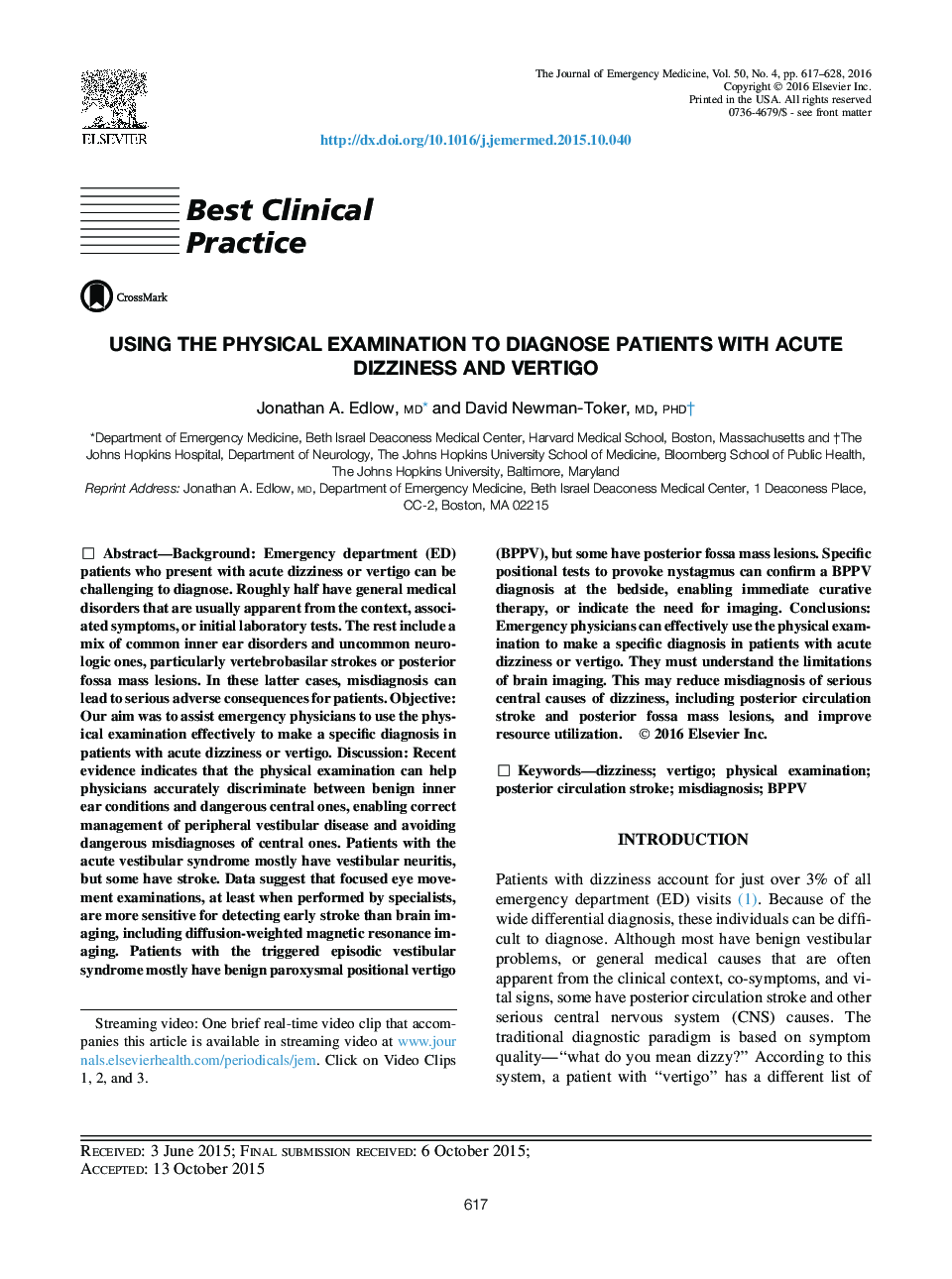| کد مقاله | کد نشریه | سال انتشار | مقاله انگلیسی | نسخه تمام متن |
|---|---|---|---|---|
| 6084605 | 1589114 | 2016 | 12 صفحه PDF | دانلود رایگان |
BackgroundEmergency department (ED) patients who present with acute dizziness or vertigo can be challenging to diagnose. Roughly half have general medical disorders that are usually apparent from the context, associated symptoms, or initial laboratory tests. The rest include a mix of common inner ear disorders and uncommon neurologic ones, particularly vertebrobasilar strokes or posterior fossa mass lesions. In these latter cases, misdiagnosis can lead to serious adverse consequences for patients.ObjectiveOur aim was to assist emergency physicians to use the physical examination effectively to make a specific diagnosis in patients with acute dizziness or vertigo.DiscussionRecent evidence indicates that the physical examination can help physicians accurately discriminate between benign inner ear conditions and dangerous central ones, enabling correct management of peripheral vestibular disease and avoiding dangerous misdiagnoses of central ones. Patients with the acute vestibular syndrome mostly have vestibular neuritis, but some have stroke. Data suggest that focused eye movement examinations, at least when performed by specialists, are more sensitive for detecting early stroke than brain imaging, including diffusion-weighted magnetic resonance imaging. Patients with the triggered episodic vestibular syndrome mostly have benign paroxysmal positional vertigo (BPPV), but some have posterior fossa mass lesions. Specific positional tests to provoke nystagmus can confirm a BPPV diagnosis at the bedside, enabling immediate curative therapy, or indicate the need for imaging.ConclusionsEmergency physicians can effectively use the physical examination to make a specific diagnosis in patients with acute dizziness or vertigo. They must understand the limitations of brain imaging. This may reduce misdiagnosis of serious central causes of dizziness, including posterior circulation stroke and posterior fossa mass lesions, and improve resource utilization.
Journal: The Journal of Emergency Medicine - Volume 50, Issue 4, April 2016, Pages 617-628
